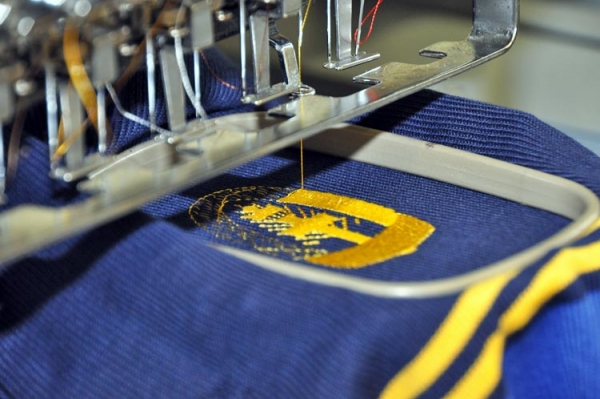Embroidery digitizing is a crucial process in the world of promotional products. It involves converting images and designs into a format that embroidery machines can understand. This guide explores the best practices for embroidery digitizing, ensuring that your promotional products stand out and effectively represent your brand.
Understanding Embroidery Digitizing
Before diving into best practices, it’s essential to understand what embroidery digitizing involves. Essentially, it is the process of transforming a design into a series of instructions that an embroidery machine can follow. This transformation requires specialized software that converts the artwork into stitch files.
The quality of the digitizing directly influences the final appearance of the embroidery. Poorly digitized designs can lead to issues like misalignment, thread breaks, and unsatisfactory finishes. Therefore, investing time and resources into effective digitizing is vital for achieving high-quality promotional products.
Selecting the Right Software
The first step in effective embroidery digitizing services is choosing the right software. Various software options are available, each with its features and capabilities. High-quality digitizing software allows for precise control over stitch types, densities, and layouts, which are crucial for creating detailed designs.
Some popular embroidery digitizing software includes Wilcom Embroidery Studio, renowned for its user-friendly interface and powerful features, making it ideal for both beginners and professionals. Tajima DG/ML by Pulse offers extensive customization options, suitable for complex designs. Embird is a cost-effective option that provides essential digitizing tools and plugins. Selecting the right software can significantly impact your ability to create high-quality embroidered designs.
Preparing Your Artwork
Choosing the right design for embroidery is critical. Complex images with intricate details often do not translate well into embroidery, where simple and bold designs tend to work best. Logos and icons with clean lines and limited colors are generally more effective.
It is also essential to ensure your artwork is of high resolution, ideally 300 DPI or higher. This clarity will assist in creating a more precise digitized file. Common file formats used for embroidery include AI (Adobe Illustrator), EPS (Encapsulated PostScript), and PNG (Portable Network Graphics). These formats preserve the quality and scalability necessary for digitizing.
Digitizing Techniques
When it comes to digitizing techniques, choosing stitch types is fundamental. There are several stitch types used in embroidery, each serving a different purpose. Satin stitches are ideal for borders and lettering, providing a smooth finish. Fill stitches are used for larger areas, offering a solid, textured look. Running stitches are best for outlines and fine details, creating a delicate effect. Understanding which stitch type to use where can enhance the overall look of your design.
Density refers to the number of stitches per inch, and adjusting this setting can help achieve the desired texture and appearance. A higher density may be needed for fine details, while lower density can be effective for larger fill areas. Underlay stitches are essential for stabilizing the fabric and ensuring the design holds its shape. Common underlay techniques include zigzag underlay, which provides good support for larger designs, and straight underlay, which works well with smaller, detailed designs. Incorporating appropriate underlay techniques can significantly improve the durability and appearance of the embroidery.
Testing and Sampling
Before committing to a full production run, conducting a test or sample run is crucial. This allows you to identify any issues in the digitized design and make necessary adjustments. Sampling helps in ensuring alignment and positioning are correct, assessing the quality of stitching and fabric compatibility, and making color adjustments if necessary.
Once a sample is produced, it is vital to analyze the results carefully. Look for any areas where the stitching may have gone awry, such as loose threads, puckering, or misalignment. This analysis is key to refining the design before mass production.
Choosing the Right Materials
The choice of fabric can greatly influence the outcome of embroidered designs. Different materials react differently to embroidery. Common fabrics include cotton, which is a versatile option that works well with most designs, polyester, known for its durability and suitability for outdoor promotional products, and twill, often used for uniforms and workwear, providing a professional look. Understanding how each fabric behaves during embroidery can help you make better decisions for your promotional products.
Investing in high-quality threads is just as important as selecting the right fabric. Threads come in various materials, including polyester, rayon, and cotton. Each type has its benefits; for example, polyester is known for its strength and colorfastness, while rayon offers a luxurious sheen but may not be as durable. Cotton provides a classic look but can fade over time. Choosing the right thread can enhance the overall quality and longevity of your embroidered products.
Managing Production Workflow
To ensure efficiency, it is essential to streamline your production workflow. This can involve setting clear timelines for each stage of production, maintaining open communication with your team to address any issues promptly, and utilizing project management tools to keep track of progress. An organized workflow can lead to smoother operations and better outcomes.
Implementing a quality control system is vital to maintain high standards. Quality checks should be conducted at various stages, including pre-production checks for design accuracy, mid-production checks to ensure stitching quality, and final inspections before shipping to clients. Establishing a robust quality control process can help minimize errors and enhance customer satisfaction.
Marketing Your Promotional Products
Once your products are ready, the next step is effectively marketing them. High-quality images showcasing the embroidery can attract potential customers. It is beneficial to use lifestyle photos that depict the product in use and create detailed product descriptions highlighting the quality of the embroidery.
Social media platforms are powerful tools for promoting your embroidered products. Sharing behind-the-scenes content, customer testimonials, and product highlights can engage your audience. Utilizing platforms like Instagram and Facebook can expand your reach and build brand loyalty.
Conclusion
Embroidery digitizing for promotional products is an intricate process that requires attention to detail and adherence to best practices. From selecting the right software and preparing artwork to managing production workflows and marketing your products, every step plays a vital role in ensuring success. By following these best practices, you can create high-quality embroidered products that effectively represent your brand and resonate with your audience. Whether you are just starting or looking to refine your existing processes, these insights can help you achieve better results in the competitive world of promotional products.




